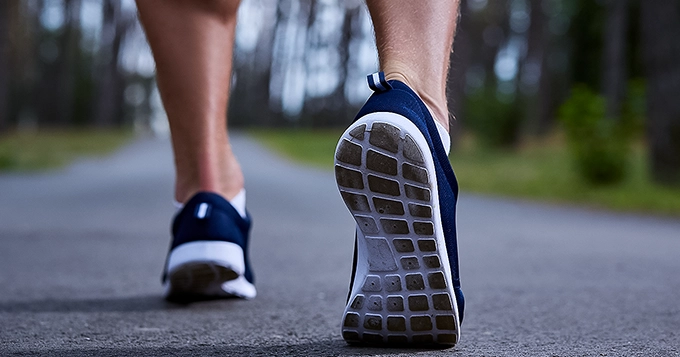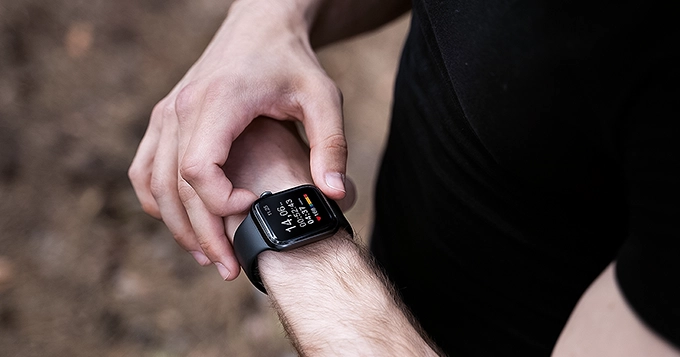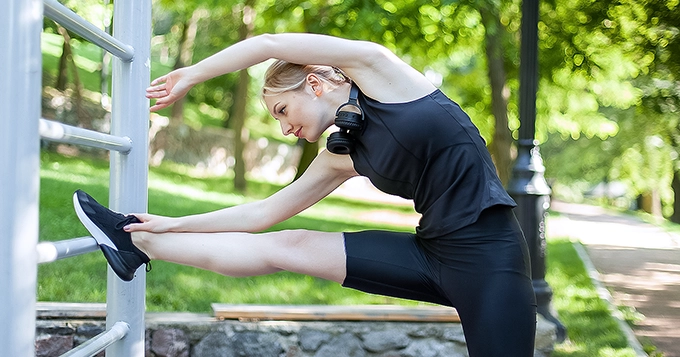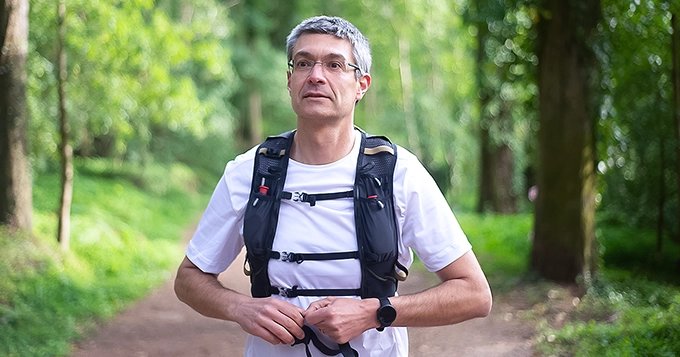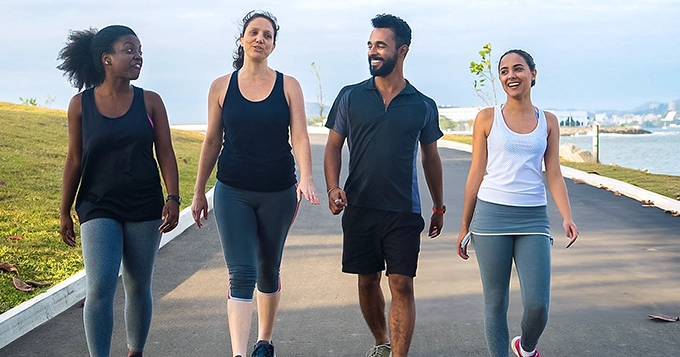Walking is one of the most popular forms of cardiovascular exercise.
Whether you go for an outdoor trail surrounded by nature, a bustling city sidewalk, a session on the treadmill, or a few laps around your office building, walking is a relatively convenient means of staying physically active.
Health Benefits of Walking
Some walking benefits include the following:
- Burns calories
Engaging in a walking exercise plays a crucial role in weight management as it facilitates calorie burning. By making sure you add 30 minutes of brisk walking into your daily schedule, you may potentially burn approximately 150 additional calories daily. It’s worth noting that the greater the duration and pace of your walking, the more calories you are likely to expend.
- Improves heart health
Walking vigorously improves circulation, decreases blood pressure, and raises heart rate. Walking more quickly can reduce your chance of dying from heart disease by half, according to research, compared to slow walkers.
- Lowers your blood sugar
A brisk stroll post-meal might drop your blood sugar levels.
Research, albeit limited, shows that a 15-minute walk three times a day, after main meals (breakfast, lunch, dinner), outperforms a solitary 45-minute walk taken at another point during the day for blood sugar control.
More research in this field is needed to confirm these findings, though.
Consider making a habit of walking after eating a meal. It’s a smart way to fit in regular physical activity, too.
- Eases joint pain
For people struggling with arthritis, walking works wonders. Not only does it build muscle strength, reducing the stress on joints and alleviating pain, but regular walking also helps in compressing and relaxing the knee cartilage. The result? The circulation of synovial fluid increases. This fluid carries oxygen and nutrients to your joints, keeping them healthy.
- Boosts immune health
Taking regular walks can be a valuable defense against illnesses, especially during the cold and flu season. A study involving more than 1,000 individuals discovered that those who engaged in a daily 20-minute walk at least five times a week experienced 43% fewer sick days compared to those who exercise once a week or less.
- Boosts energy
Opting for a walk when feeling tired might provide a more effective energy boost than reaching for a cup of coffee. Walking improves the flow of oxygen throughout the body and can elevate levels of cortisol, epinephrine, and norepinephrine — hormones known to contribute to increased energy levels.
- Improves mood
Walking is beneficial for mental health, as evidenced by studies demonstrating its positive impact on reducing anxiety, depression, and negative moods. Additionally, it has been shown to enhance self-esteem and alleviate symptoms of social withdrawal.
To harness these mental health benefits, strive for 30 minutes of brisk walking or engage in other moderate-intensity exercises three days a week. Alternatively, you can break this time into three 10-minute walks for added flexibility and convenience.
- Tones your legs
Walking benefits the muscles in your legs. To further enhance strength, consider walking in hilly terrain, using a treadmill with an incline, or seeking out routes that incorporate stairs into your routine.
Tips to maximize the benefits of walking
Whether you’re a fitness enthusiast or just getting started on your wellness journey, here’s a simple guide to help you maximize the benefits of walking.
-
Add intervals
Interval training entails alternating short bursts of intense activity with periods of active recovery. Here’s a simple guide on how to incorporate intervals into your walking workout:
- Warm-Up:
Begin with a brief warm-up to prepare your body for the upcoming activity. - Moderate Pace:
Walk at a moderate pace for 2 minutes, allowing your body to ease into the workout. - Faster Pace:
Increase your walking pace for the next 1 minute, pushing yourself a bit harder. - Return to Moderate Pace:
Return to the moderate walking pace to recover and catch your breath. - Landmark Goals:
Set small goals during your walk, such as reaching specific landmarks like the end of the block or the next tree. - Repeat:
Repeat this sequence throughout your walk, alternating between moderate and faster paces to keep the workout dynamic and challenging.
-
Engage your upper body
Elevate the effectiveness of your walking workout by incorporating your upper body. Here are some tips:
- Arm Swings:
Swing your arms with proper form, initiating the movement from the shoulders rather than the elbows. This engages your upper body muscles and promotes a more comprehensive workout.
- Nordic Walking Poles:
Integrate Nordic walking poles into your routine to enhance upper-body strength and flexibility. The use of these poles not only provides additional support for balance but also adds resistance, intensifying the engagement of your arm and shoulder muscles.
-
Vary your terrain
Adding variety to the terrain can enhance the effectiveness of your walking workout. Here are some suggestions:
- Incline and Hill Workouts:
Integrate inclines and hill workouts into your routine, whether it’s outdoors on natural slopes or using the incline feature on a treadmill. This challenges your muscles and provides an extra layer of intensity to your walk.
- Nature Trails and Beaches:
Explore nature trails, green belts, or sandy beaches to introduce diverse surfaces and natural elements to your walking routine. The uneven terrain and soft surfaces can engage different muscle groups, offering both a physical and sensory experience.
- Stairs or Stadium Steps:
Incorporate stair climbing or utilizing stadium steps into your workout. This activates different muscles, particularly in your lower body. It’s an effective way to boost the intensity of your walk.
Varying the terrain makes your walks interesting and also challenges your body in new ways. Different surfaces and inclines engage various muscle groups, promoting overall strength and fitness.
-
Add some resistance
To elevate the impact of your walking workout, consider integrating resistance exercises. Here are some ideas to enhance your routine:
- Midpoint Exercises:
Select a midpoint during your walk and incorporate bodyweight exercises. Engage in activities like squats, lunges, or leg lifts to target various muscle groups and add strength training to your routine.
- Utilize Surroundings:
Make use of the elements in your environment, such as benches, fence posts, or playground equipment. Incorporate resistance exercises like standing pushups, tricep dips, or wall sits. These exercises leverage your surroundings to introduce resistance and diversity to your workout.
- Outdoor Fitness Circuit:
If accessible, explore an outdoor fitness circuit. These designated areas typically feature equipment for resistance exercises, offering a structured space to diversify your routine and intensify the challenge.
- Wear a Weighted Vest
Incorporating a weighted vest into your walk is a natural means of strength training. By wearing a weighted vest, you enhance exercise intensity, adding resistance that specifically targets your spine and hips. This simple addition contributes to a more comprehensive strength training experience during walking exercise.
-
Extend your walk
Maximize the benefits of your walking workout by progressively extending your distance. Here are some strategies that can help you achieve that:
- Destination:
Spice up your walking routine by selecting a specific destination or altering your route regularly. This not only adds variety to your workout but also keeps things interesting and engaging.
- Team Up:
Form a team with friends, family, or coworkers to accompany you on your walks. Having companions not only makes the experience more enjoyable but also provides motivation to go a little further collectively.
- Daily Extension:
Gradually extend your walking distance by aiming to cover just one block more each day. This gradual approach allows you to increase the duration of your workout steadily, helping you build endurance over time.
By incorporating these strategies, you not only make your walking routine more enjoyable but also challenge yourself to go beyond your comfort zone. Maximize walking advantages to improve your fitness and overall well-being.
